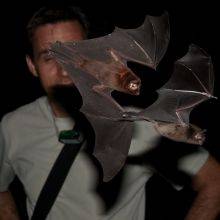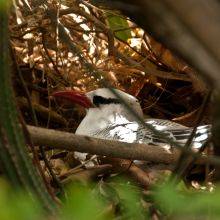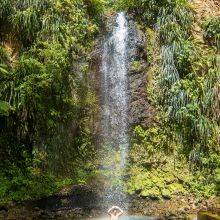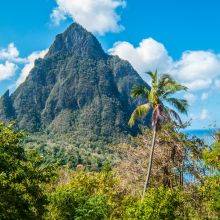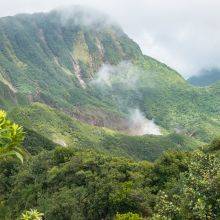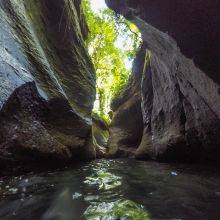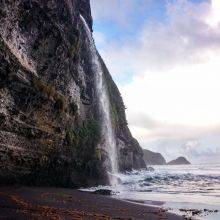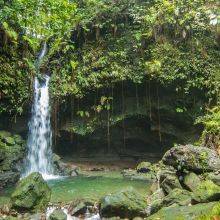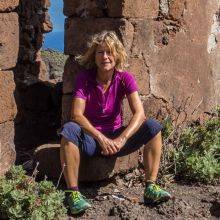When Is the Best Time
To spot the oilbirds, a guide is necessary to find the muddy trail to the Cumaca Cave. It depends on the water level if it is safe to walk into the cave. This tour is not recommended during the rainy season. The oilbirds are nocturnal; during the day, they are resting in the cave.
Dry Season - Weather
Our guide Emile and I
The best months for Trinidad and this adventurous and muddy hike to Cumaca Cave are January to May and September. It frequently rains in Trinidad. Even in the drier season, the track is slippery and muddy, but it's worth every second. During the rainy season, the water level of the Oropouche River may be too high for safe walking into the cave. I recommend this trip only in the drier season and not after heavy rainfall!
Tip for Birders
Trinidad is a birders paradise in many dimensions. The ASA Wright Nature Center was established in 1947. Nowadays, it is the most popular bird-watching retreat in the entire Caribbean Islands. Another excellent tour is to a bat cave. Watch a million bats coming out of Tamana Cave in the night. Don't miss the scarlet ibis and pink flamingos in the Caroni Swamp.
Tourism plays a minor role in Trinidad therefore only limited hotels are available. If you plan to visit Trini in the peak season it is recommended to book your stay in advance. We spent an entire week in a guesthouse and got tons of recommendations for our vacation.
Best Months to Visit
Location and Tips

The Cumaca Cave is located close to the Cumaca Village. It is gravel, bumpy road and a 4x4 is necessary. It is advisable to get a guide for this trip. A permit for entering the cave is required. It is located on private land. The trail to the cave takes about 1.5 hours and is usually overgrown. A long pair of trousers are recommended. The last third of the trail is muddy and slippery.
Before you enter the cave, you see the river full of seeds from the fruits of oil palms. You have to walk through the Oropouche River to get into the cave. You definitely get wet, and the river had a strong flow when we entered. The cave is more than 200 meters deep and has three accessible chambers. However, don't walk too far inside! The water can rise rapidly. Two divers, Adam Richards, and Victor Abraham explored the cave in 1964 beyond the three chambers and were never seen again. The cave is also home to cave-dwelling catfish and bats. The catfish is not used to light, if using a torch it will hide behind a rock. Inside the cave, a headlight and a powerful torch are necessary to spot the oilbirds. When you enter the cave, the oilbirds make a loud noise due to the disturbance. Avoid shining the light on them too much. The Cumaca Cave was even visited by Theodor Roosevelt, the 26th president of the United States in 1911.
5 Oilbird Facts
- The oilbird is the only nocturnal fruit-eating bird in the world.
- Nesting colonies in caves are found only in Trinidad and in northern South America.
- They navigate with echolocation like bats but are related to nightjars.
- The birds are also called "Guacharo", devil bird or "diablotin", and as soon as you enter the cave, you know why.
- The name origins from the chicks which become pretty fat before they can fly. They are often even larger than their parents. The oilbird chicks were captured and boiled by the natives and early settlers for their oil.
Packing List
- It is advisable to carry a pair of water shoes in your backpack
- Gloves to protect the hands from the poop of the birds
- Protect your head as well
- A torch and headlight to explore the cave
- Additional clothes in the car at the trailhead
Top Tips
- On the way back it is worth making a stop for a short walk to the Turure Waterfall and steps in the Cumaca Valley. Bring a swimsuit and towel for a refreshing bath.
- An experienced guide is necessary for this trip. We did this adventurous tour and several more with Emile the best guide we ever had! More information and booking with Nature Trek TNT




















